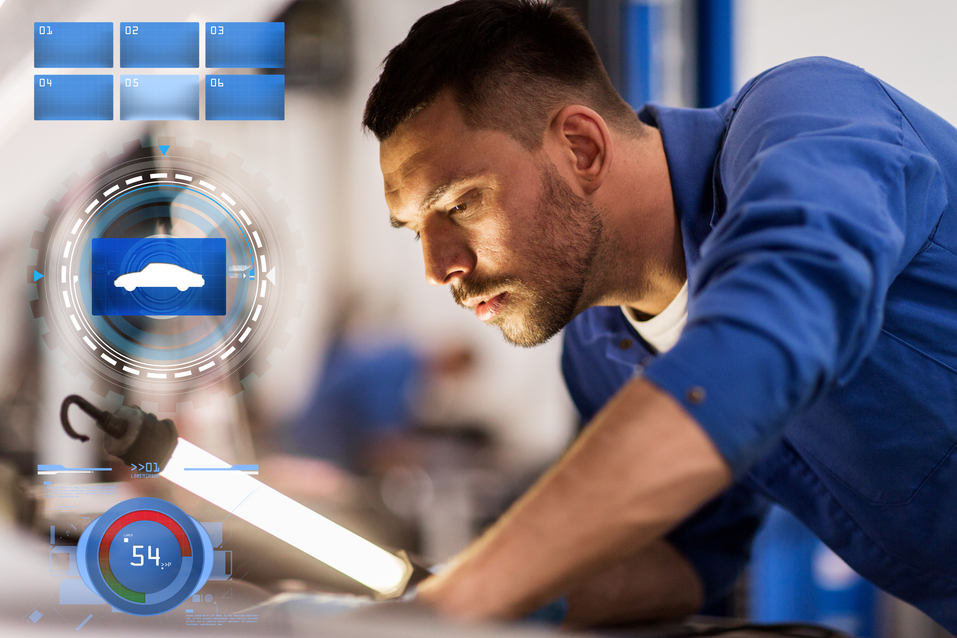Taking your car in for a smog test can be nerve-wracking. If your car doesn’t pass, it could mean costly repairs, late DMV registration fees, and all the stress that comes with unexpected expenses. Unless your car is brand new, you might think that passing is up to fate. But there are actually several steps you can take to increase your chances of passing the California smog check:
1. CHECK THE “CHECK ENGINE” LIGHT
If your “Check Engine” light is on, that’s an automatic smog test failure. Fortunately, many car repair shops (and even some auto parts stores) now offer free “Check Engine light checks” with equipment that interprets the specific malfunction code. If your mechanic tells you something needs to be repaired, get it repaired before the smog test or the light will turn back on.
2. MAKE SURE THE BATTERY HASN’T BEEN RECENTLY DISCONNECTED
If your vehicle recently needed a jumpstart or you replaced the battery, wait at least a week before taking the smog test. Whenever a car’s computer loses power, it erases the internal self-test monitors, including the emission monitor that’s required to pass a smog check. After driving 100-200 miles (which doesn’t take as long as you think on San Diego freeways), the emission monitor will be restored.
3. GET AN OIL CHANGE
Dirty oil is high in hydrocarbons—pollutants that will trigger a smog test fail—so make sure your car is filled up with fresh oil. And while you’re getting the oil changed, ask the technician to do a visual inspection of the engine to catch any cracked, broken, or disconnected hoses that could contribute to a smog test failure.
4. GET A TUNE-UP—BUT NOT RIGHT BEFORE THE TEST
A fresh tune-up ensures your engine is running in tip-top condition. But don’t get your car serviced right before the smog test for the same reason as getting a new battery: most mechanics disconnect the battery during a tune-up, which resets the car’s computer. So again, you’ll need to get in those 100-200 miles of driving before the smog check.
5. FILL UP THE COOLANT AND GAS TANKS
Part of the smog test is running the engine at high speed while it’s stationary, which results in less air flowing through the radiator to cool it. Before your smog check, make sure your coolant tank is filled, along with the gas tank—a low gas level could expose the fuel pump and let vapor into the fuel line, which could cause your car to fail.
6. DRIVE FAST TWO WEEKS BEFORE THE TEST
If you’re not familiar with the catalytic converter, it’s the part of the engine that converts harmful pollutants into less harmful emissions. But it needs to get hot enough to do its job, so be sure to drive at freeway speeds (on the freeway, of course) frequently in the two weeks leading up to the smog test in order to burn out any oil and gas residues.
7. GET A PRE-INSPECTION
The best way to know whether your car will pass or fail a smog test is getting a pre-inspection. Many smog check facilities offer less expensive pre-inspections that involve all the same tests as the official smog check, without the results being recorded with the DMV. And if you get the pre-inspection done long before your registration is up, you’ll have plenty of time to fix any necessary repairs before the “real” test.
SMOG CHECKS AND SMOG REPAIRS – WE DO IT ALL!
At Palmdale Smog Check, we’ve handled smog tests, repairs from failed smog tests, and nearly everything in between for over 20 years. We also offer a 1-year or 12,000-mile warranty on all our repairs. If you’re unsure about whether your car will pass California’s smog check, stop by and see us today. Call us at 661-538-9135 now!

